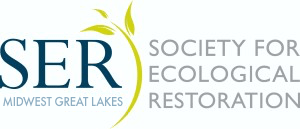Fall Webinar 2024: Dam Removal and River Restoration
If you missed the Fall webinar check out the recording HERE! Use passcode:
$?N43?ep
Description: This webinar will examine some important dimensions of dam removal for river restoration including dam removal at both large and small scales, the elements of planning, feasibility, experimental design and execution of dam removal, and the importance of community engagement and stewardship of the restored river. Our three presenters will provide:1) A review of the feasibility of the removal of the Ford Dam on the upper Mississippi River in Minnesota’s Twin Cities metropolitan area; 2) An analysis of before and after effects of the removal of the Brown Bridge Dam on the aquatic invertebrate communities of the Boardman/Ottaway River in northern Michigan, 3.) A discussion of the long-term past, present, and future commitment to the health and value of the Ottaway River by an Indigenous People, the Grand Traverse Band of Ottawa and Chippewa Indians with historic and continuing relationship to the Ottaway.
Summer Webinar 2024: Large-scale Wetland Restoration Projects in Northern Illinois and Northwest Indiana
If you missed the Summer Webinar…
Passcode: .8SC.N8X
Check out the recording HERE!!
“The Wetland Initiatives large-scale wetland restoration projects in northern Illinois and northwest Indiana”
Description:
Katie Kucera, ecologist with The Wetlands Initiative, will give attendees an overview of TWI’s large-scale wetland restoration projects in northern Illinois and northwest Indiana. TWI’s mission focuses on restoring landscapes—including wetlands—to improve water quality, climate, biodiversity, and human well-being. At the Dixon Waterfowl Refuge, TWI has restored 3,000+ acres of wetland and upland habitat along a corridor of the Illinois River, benefiting birds, plants, and outdoor enthusiasts. In the bistate Calumet region, through collaborative partnerships with a range of conservation peers, agencies, and local community groups, TWI is having success restoring degraded/remnant urban wetland areas to healthy hemi. This on-the-ground work is benefiting a range of wetland-dependent birds that had been nearly extirpated from this area, and also returning quality natural areas for the Calumet’s underserved communities to visit and enjoy.


Here are links to our last three webinars hosted by the SER-Midwest Great Lakes Chapter.
Winter/Spring Webinar, 2024
Measuring Success: What Indicators Quantify Water Quality and Habitat Improvements of Urban Watershed Restoration Projects
Bennett Kottler P.E. Ph.D.- Program Director, Mill Creek Alliance
Kate Moran – Environmental Analyst, Kimley-Horn
Thursday, March 28th, Noon-1PM (EDST)
This webinar ties together the themes of ecological restoration practices with the measurement of local water quality and habitat integrity in an urban watershed. . Bennett Kottler, Project Director, of the Mill Creek Alliance (MCA) will discuss the history of MCA and present case studies of doing watershed restoration projects while connecting to local stakeholders along the Mill Creek Watershed in Cincinnati, Ohio. Kate Moran, an Environmental Analystwith Kimley-Horn, will tie these case studies together with presentations of both qualitative and quantitative data collection and analysis strategies used to gauge the positive impacts of these projects. These case studies and the data analysis tools discussed are applicable to practitioners working within any urban watershed.
Here is the link:
Fall, 2023 Webinar
Daylighting human quality of life benefits of ecological restoration.“
The ecological benefits of restoration projects are routinely measured using metrics such as acres of improved area, increase in target species abundance, or reduction in sediment loads. The human quality of life (i.e., human wellbeing) benefits of ecological restoration projects are rarely considered during project planning or measured either as a baseline prior to restoration or as a result of a restoration action. I provide an example for developing and ranking human quality of life (QOL) indicators for ecological restoration projects. QOL indicators can be relevant to restoration priorities (e.g., birding visits increase with bird abundance and diversity) and resonate with a local community (e.g., increased recreation translates to a better economy). I also present results of a recent analysis of data from 11 years of Great Lakes Restoration Initiative (GLRI) projects that indicate GLRI projects are incorporating metrics for QOL benefits despite not being required for funding and not being reported. Based on an online survey, more than 70% of responding project managers who set a human wellbeing goal for a restoration project believed they achieved it. Human quality of life metrics can provide an important complement to ecological data by providing further (social) justification for funding programs and building community support for ecological restoration efforts. The United Nations’ “Decade of Ecosystem Restoration” set a goal to promote more socio-ecological goals in ecosystem restoration. Restoration practitioners should develop systems to better measure and track such efforts to document the full extent of restoration outcomes.
| CHRISTOPHER A. MAY, CERP |
Here is the link:
Summer Webinar, 2023
“Disturbance/renewal ecology: science, application, and the future” Trevor will be hosting. This speaker, Stephen Thomforde from Stantec, Inc.,
Here is the link: https://vimeo.com/society4ecorestoration/download/860221268/a98ff9e2ec

